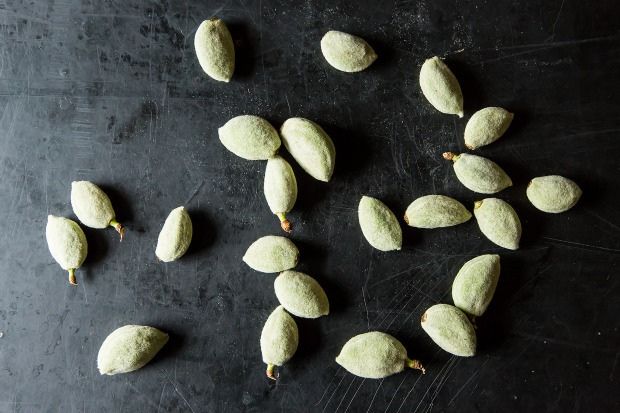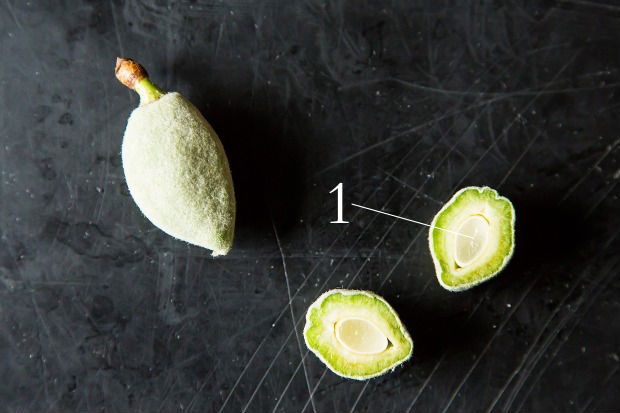Popular on Food52
6 Comments
Jaimi B.
April 18, 2015
Does anyone know where I can find the nutritional information for the very young ones? I can't imagine they have the fat or protein that even a more mature young almond would have.
Cynthia I.
April 30, 2014
Priscilla,
Thanks so much for your advice. I've been hashing out the process with a great group of expats on this side of the pond and we ended up combining Judy Witts Francini candied walnut recipe she was kind enough to share with Lucy Vanels clementines confites recipe which I adore. Now that I have seen your recipe I realized that I was overcomplicating the whole thing! Our almonds are at varying stages of maturity depending on the location of the trees and I can still get smaller ones. i have (attempted) to candy them, have pickled them (thanks to Glaia Kremezi), made homemade almond paste for a cassata (Rosetta Costantino) eaten them raw with EVO and chili salt and simmered with EVO and lemon juice/salt. The fun is just beginning with the almond season here!
Thanks so much for your advice. I've been hashing out the process with a great group of expats on this side of the pond and we ended up combining Judy Witts Francini candied walnut recipe she was kind enough to share with Lucy Vanels clementines confites recipe which I adore. Now that I have seen your recipe I realized that I was overcomplicating the whole thing! Our almonds are at varying stages of maturity depending on the location of the trees and I can still get smaller ones. i have (attempted) to candy them, have pickled them (thanks to Glaia Kremezi), made homemade almond paste for a cassata (Rosetta Costantino) eaten them raw with EVO and chili salt and simmered with EVO and lemon juice/salt. The fun is just beginning with the almond season here!
Priscilla M.
June 7, 2013
Nice. When they are still babies, in February, I like to slice green almonds over salads or candy them whole. At this point in the season though, immature almonds like those in both of your photos will be difficult to find. By June, the nutlet will really be forming and its skin turing brown. I'm envious of friends in California who may be able to get their hands on almonds in late June and July, when they become a "fresh almond." Of course year round their is almond butter.
Cynthia I.
April 29, 2014
Dear Priscilla,
I saw your comment regarding the fact that ou candy young whole almonds. I live in the south of Italy with almond trees and am trying to track down a recipe. The nearest thing I have found is a recipe from an 18th century collection which is not clear to me. Do you have a recipe you would be willing to share? Thanks in advance. Cynthia
I saw your comment regarding the fact that ou candy young whole almonds. I live in the south of Italy with almond trees and am trying to track down a recipe. The nearest thing I have found is a recipe from an 18th century collection which is not clear to me. Do you have a recipe you would be willing to share? Thanks in advance. Cynthia
Priscilla M.
April 30, 2014
Hi Cynthia,
I'll share my procedure because I don't follow a recipe but the almonds in California are too mature to candy by now. I would have to get them no later than mid March. The growing season is even further ahead in Italy so you may not find whole green almond pods tender enough to candy.
So for this year (if you are lucky) or next season. I candy the whole tender pods the same way I make candied grapefruit or orange rind. Blanch the whole pods in boiling water for a few minutes. This sterilizes and tenderizes them. Rinse under cold water to set the green color. Drain very well. Then simmer them in simple syrup. You can add spices, a cinnamon stick etc. if you like. Allspice berries work well. Once they are tender, drain them very well on a screen. Then roll them in sanding sugar. Priscilla
I'll share my procedure because I don't follow a recipe but the almonds in California are too mature to candy by now. I would have to get them no later than mid March. The growing season is even further ahead in Italy so you may not find whole green almond pods tender enough to candy.
So for this year (if you are lucky) or next season. I candy the whole tender pods the same way I make candied grapefruit or orange rind. Blanch the whole pods in boiling water for a few minutes. This sterilizes and tenderizes them. Rinse under cold water to set the green color. Drain very well. Then simmer them in simple syrup. You can add spices, a cinnamon stick etc. if you like. Allspice berries work well. Once they are tender, drain them very well on a screen. Then roll them in sanding sugar. Priscilla




See what other Food52 readers are saying.